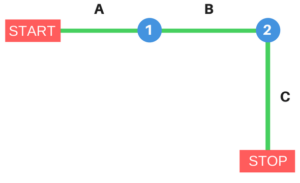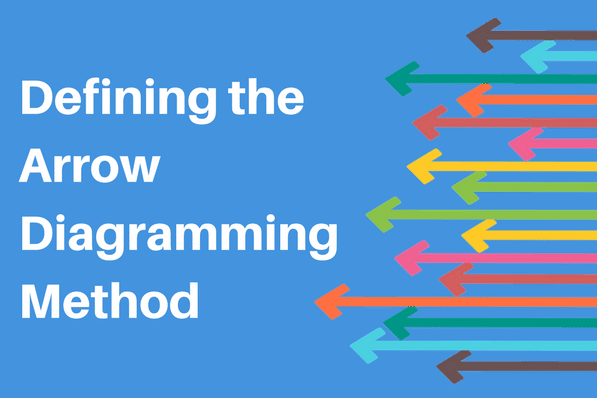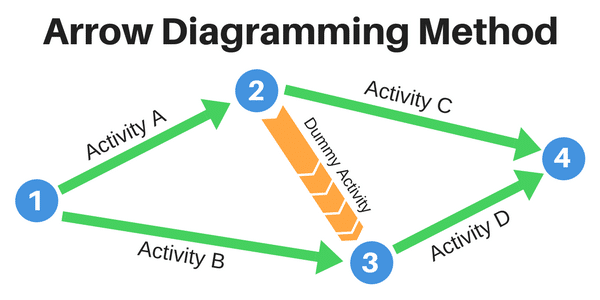The arrow diagramming method’s popularity is on the wane because of the introduction of software solutions that can automatically calculate the critical path of a project.
However Workzone has chosen to elaborate upon this staple of the traditional project management toolkit because of its ability to break down a particular assignment into an assembly of individual activities and thus deepen the comprehension of the team working on the project in a way which out of the box software platforms can never accomplish.
It is recommended that new entrants into the world of project management master the arrow diagramming method as a personal evolution requisite instead of a means to the end of efficient management.

This method is also known as “activity on arrow” or AOA and has been used for a very long time to:
- Elucidate the required order of tasks within a project
- Schedule these tasks or activities in the most streamlined way possible
- (Thus) Come up with the best schedule for the entire project
- Identify resource problems and feasible solutions
- Identify the interdependency between tasks so that a visual representation of exactly what to accomplish first before moving on to subsequent activities is possible
- Each arrow stands for an individual task which needs to be allocated resources both tangible and human for execution.
- The base of an arrow stands for the beginning of the particular activity and the head indicates the end.
- The length of an arrow is a standard estimation of the time taken to execute the activity. However it must be kept in mind that the length is not an objective indication of the required time as arrow diagramming method doesn’t advocate the use of a length to time conversion scale. Instead it is the relative length of the arrows which give project teams an idea of the duration of an activity with respect to the others.
- The circles marked 1, 2, 3 and 4 are termed as “nodes”. Nodes are defining or momentous occurrences which are generally the output or the product of one or more activities. These nodes should not be allocated resources nor do they require any schedule time for execution.
- The dummy activity is a simulated activity that is used as a placeholder simply to demonstrate the sequence of activities tagged as optimum in order to result in the critical path of the project.
You can conclude that:
“Activities A and B both originate from the same set of circumstance or occurrence 1 which is the end result or output of a separate flow of logical activities. Even though A and B are shown to proceed simultaneously, A takes a much shorter time to yield the resultant node 2 than B does to reach the output of 3. The dummy activity as a placeholder further confirms the fact that activity D can’t initiate unless both outputs 2 and 3 manifest. The final node 4 is again the cumulative result of activities C and D.”
WHEN DO YOU USE ARROW DIAGRAMMING?
Arrow diagramming, like all techniques, thrives on a set of assumptions.
- The approximate time duration and resource requirement of all the activities are known to the team creating the diagram.
- The logical sequence of the events is also known.
- The schedule of the project is the major consideration and its maintenance of paramount importance.
- The activities involved are sometimes interdependent and most often complex requiring out of the box, non-linear thinking.
The arrow diagramming method is a time tested, practical approach which capitalizes the fact that visual information and directions are processed 60,000 times faster than text, thereby boosting chances of project success.





